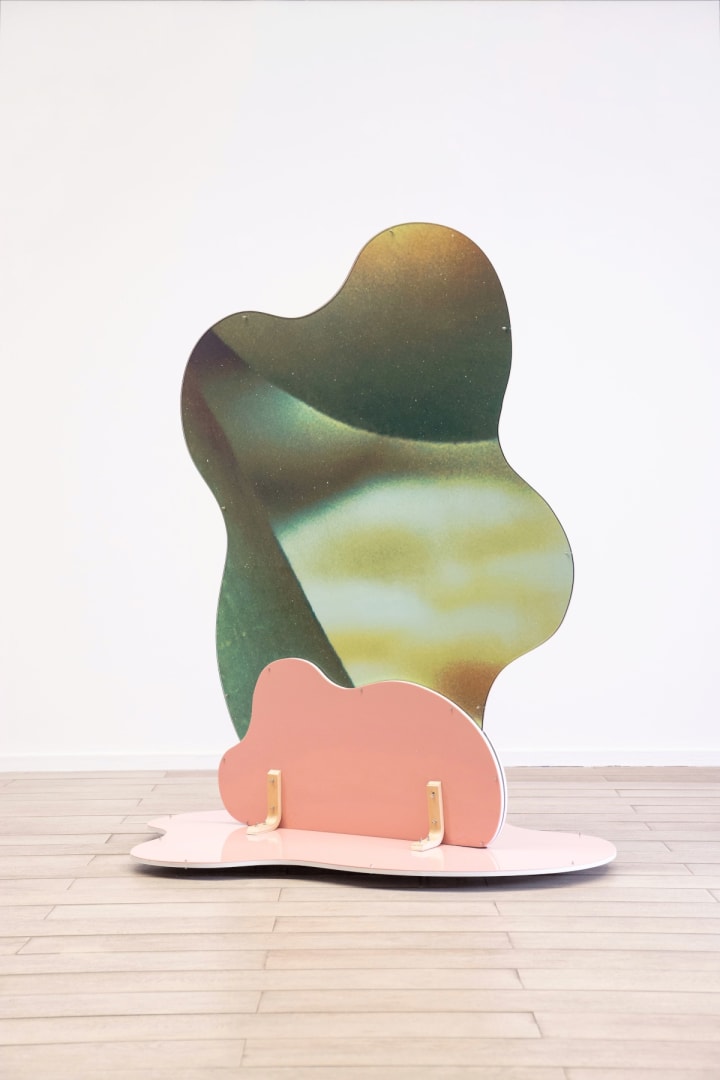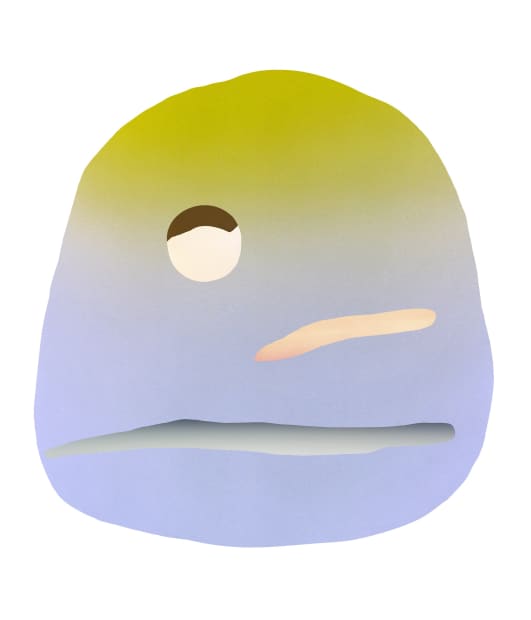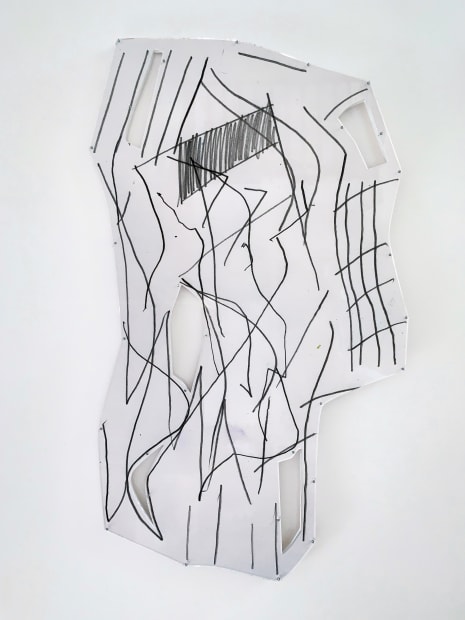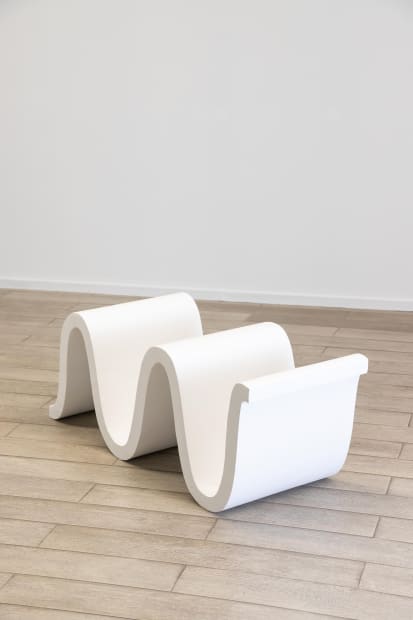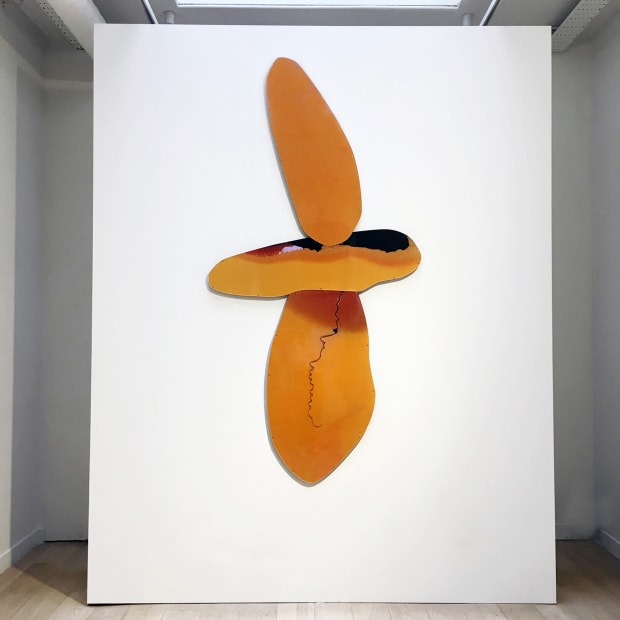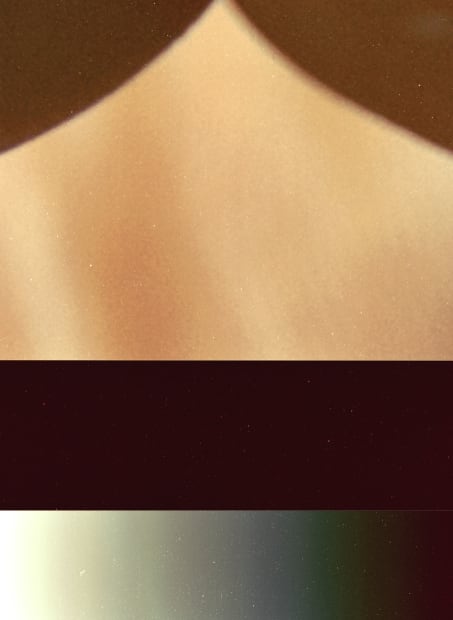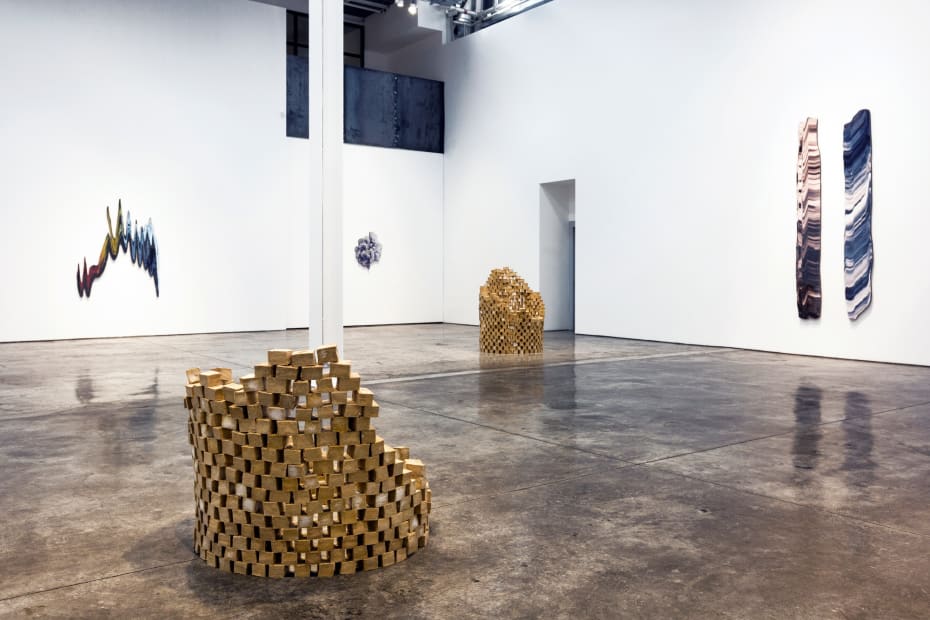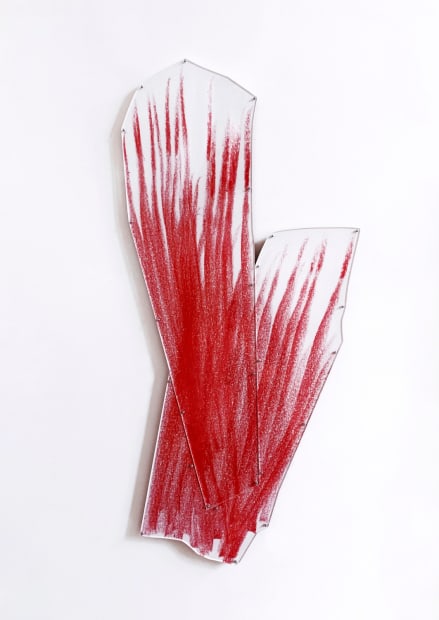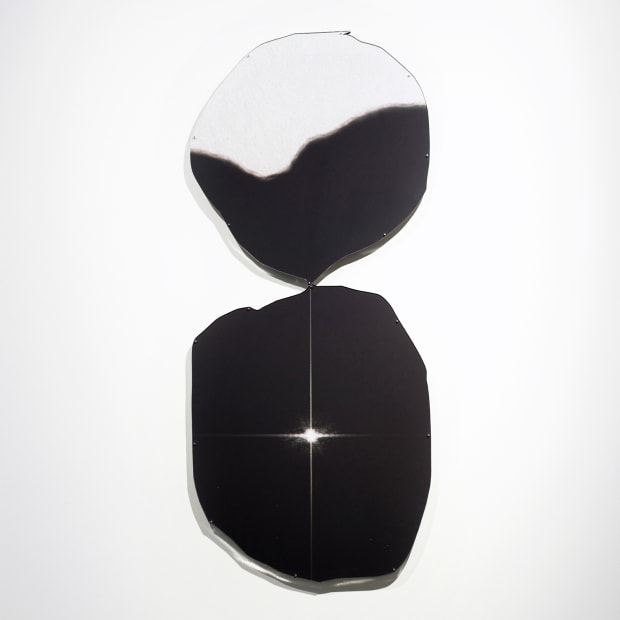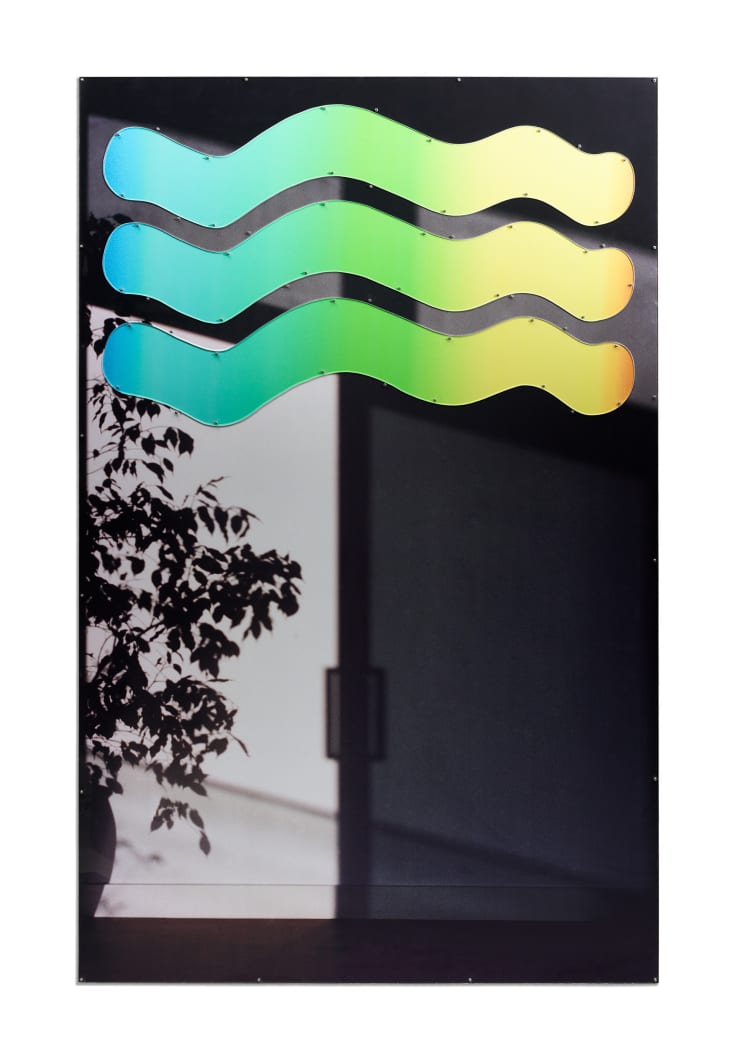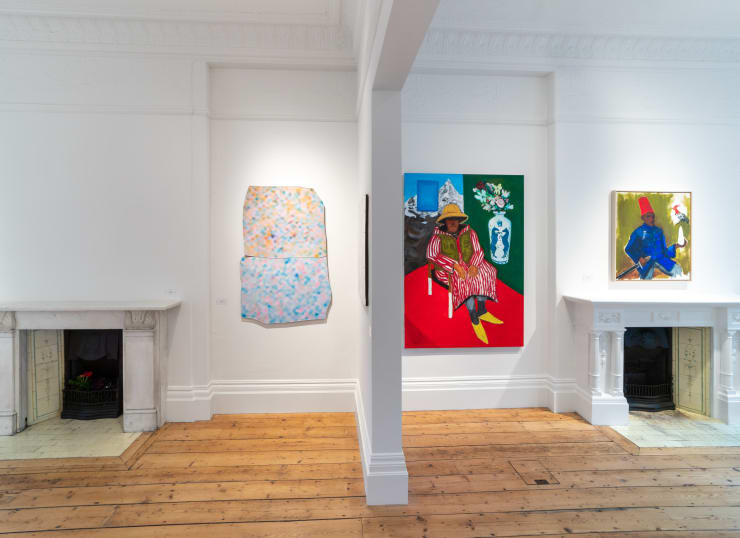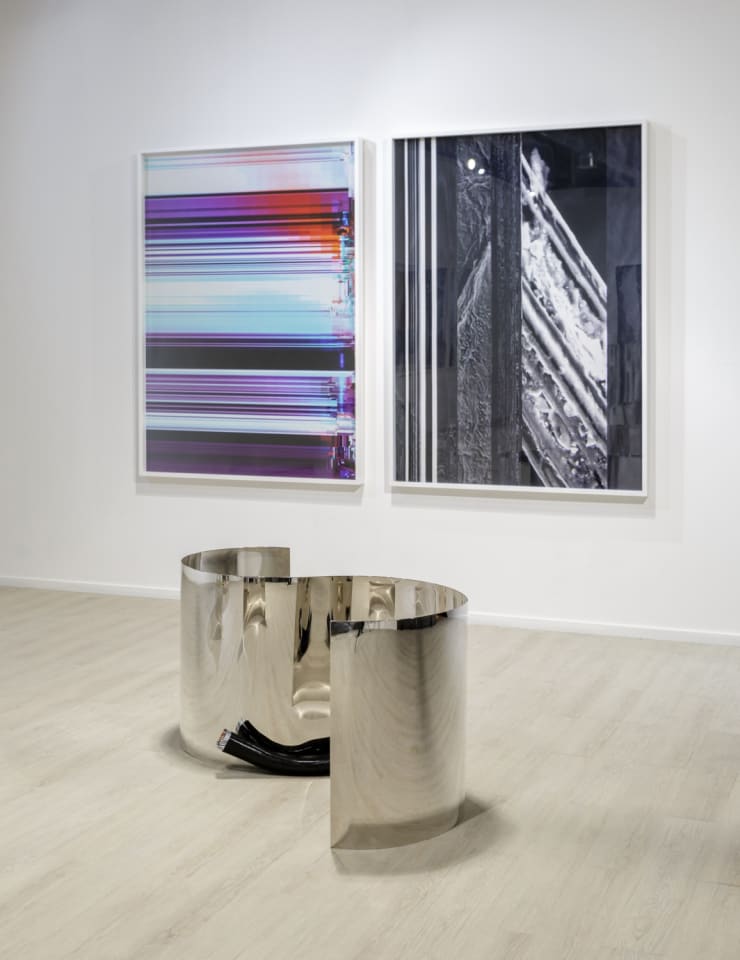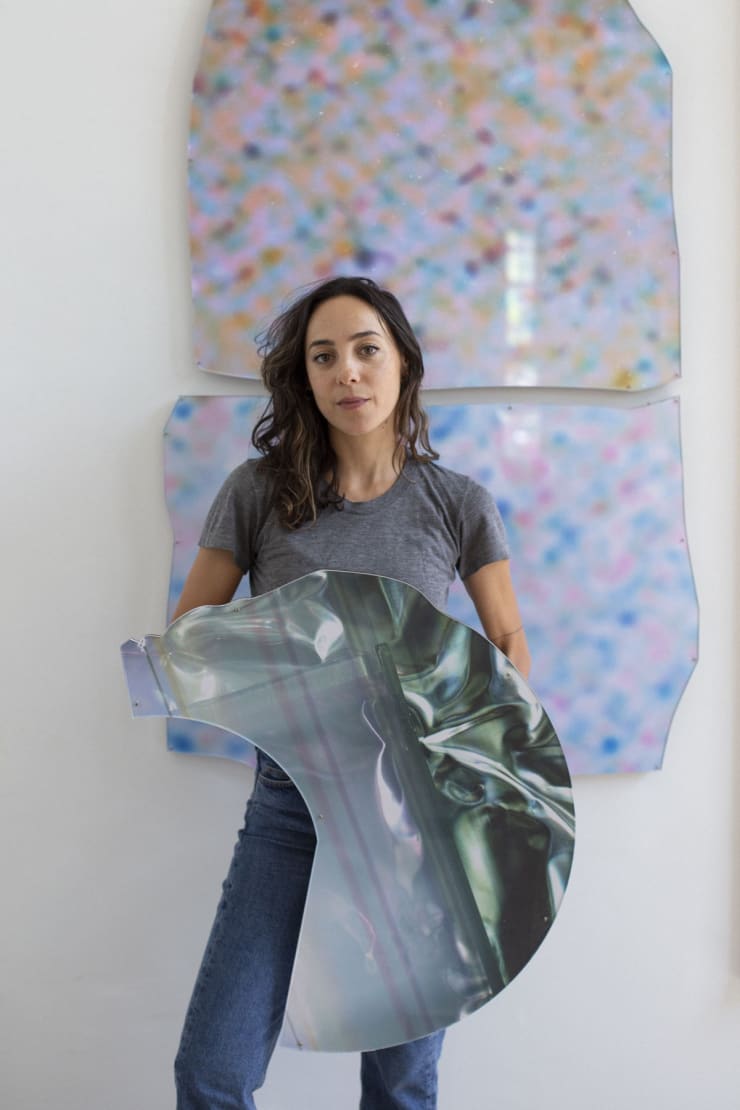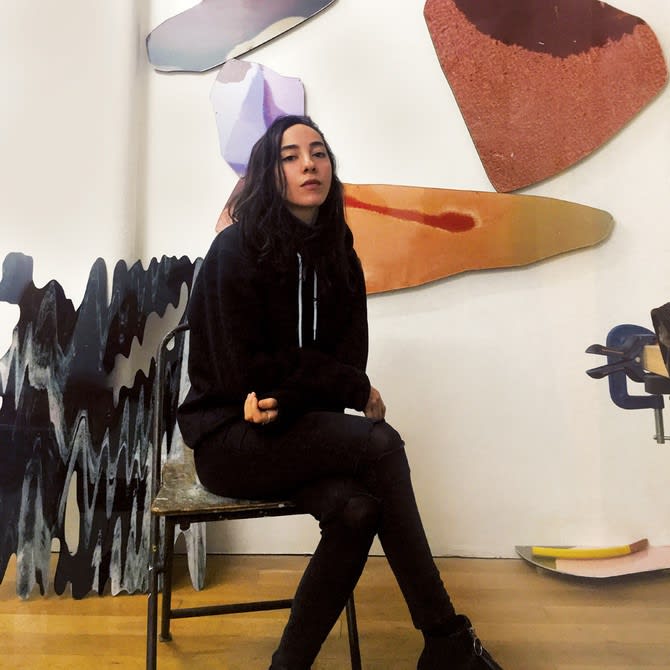Sara Naim
Naim is primarily concerned with perception, and its ability to alter through shifting polarities. Interrogating different modalities of seeing, her work deconstructs the sinuous line between perception and construct. Her practice aims to transcend form and their boundary because, she argues, solidity and separation are constructs. Naim refers to theoretical physics and its implications on understanding boundaries, to offer a different perspective to the classic notion of solid objects having impenetrable lines, suggesting a fluidity that transcends impenetrability and linearity.
Examining borders in this way, her work envisages a collective space that deconstructs separations - between country and territory, skin and surface, pleasure and pain. Playing with this notion of nonduality, different dimensions and mediums coexist; photography is sculptural, sculptures are painterly, and paintings are photographic.
Using a methodology that is both forensic and performative, she employs her own body to index changing states. Edges of her work trace the organic shapes of her subjects of study, whether this is a single cell or a topography. Amplified dead skin cells, chemical reactions and intended glitches abstract into sculptural landscapes. An oscillation between intimacy and distance occurs through this dialects of scale, offering a lens on internal, external and unseen spheres.
In her work, the corrupt imagery of technological vulnerability is analogous to physical manifestations of emotional vulnerability such as with reddening cheeks, stuttering or goose bumps. Here she asks: Where does internal and external meet? How can we use polarity as a tool to shift perspective?
By transgressing the boundaries of perception, Naim’s work challenges restrictive perspectives on separateness, whether individual, social or national. As the building blocks of her small-scale samples transform into large-scale immersive installations, she tries to find the distinction between perception and construct, form and it’s representation.
-

Sara Naim
Rose Tinted 12 May - 8 Jul 2022The Third Line is pleased to present Sara Naim's third solo exhibition at the gallery. Rose Tinted introduces a new body of work featuring photographs based on utopian scenes that don't entirely correspond with their sculpted forms. For the last time after six years, Naim uses plexiglass, wood and print in her wall and floor-based artworks, which contain imagery related to food, land, and objects depicted in an idealised form.Read more -

The Third Line at Cromwell Place
Gallery 5, Cromwell Place, London 2 - 10 Jun 2021The Third Line is pleased to announce a group exhibition of works by Anuar Khalif__b/b__, Sara Naim and Sophia Al Maria at Cromwell Place in London. Featuring painting, sculptural photography...Read more -

THERE IS FICTION IN THE SPACE BETWEEN
23 Mar - 30 Jul 2020The Third Line is pleased to present There Is Fiction In The Space Between , a group exhibition celebrating the gallery’s fifteenth anniversary. This exhibition draws on the breadth of...Read more -

BUILDING BLOCKS
Sara Naim 16 Jan - 27 Feb 2019The Third Line is pleased to present Building Blocks, Sara Naim’s second solo exhibition at the gallery. Extending the artist’s preoccupation with micro images and dichotomies between proximity and distance...Read more -

WHEN HEARTSTRINGS COLLAPSE
Sara Naim 14 Mar - 16 Apr 2016The Third Line is pleased to present When Heartstrings Collapse, Sara Naim’s first solo show with the gallery. Sara’s interest in micro images, particularly that of skin cells, investigate the...Read more
-

Sara Naim: Reality Beyond Rose-Tinted Lenses
Jareh Das, Ocula, January 18, 2023 -

THE BREAKDOWN- Syrian artist Sara Naim discusses plexiglass work ‘Window Scene’
Arab News, June 10, 2022 -

The making of memories: Syrian artist Sara Naim uses material from her homeland to create striking abstract imagery
Iain Akerman, Arab News, February 16, 2019
